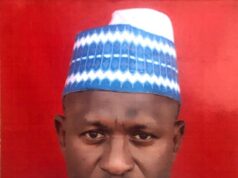BY TPL Umar Shuaibu
Late Professor Akin L. Mabogunje is among the leading patriarchs of modern planning in Nigeria. Between 1976 and 1978, he was privileged to be invited to serve as consultant on assembling a team of experts to undertake the dual assignment of an Ecological Survey of the Federal Capital Territory and a Census of Economic Assets of the Population of the Territory.
During the 1999 International Workshop on the Review of Abuja Master Plan held at the Ladi Kwali Hall of the Abuja Sheraton Hotel, Professor Mabogunje presented a keynote address, titled “Abuja: The Promise, the Performance and the Prospects”.
According to Mabogunje, the new Federal Capital was set up to meet some of the ideals which the then Military regime believed would answer the clamour of the country for a restructured polity. Consequently some seven principles, explicit and implicit can be identified in the philosophy that was meant to underpin the development of the new capital.
These are the principles of equal access, equal citizenship, environmental conservation, city beautiful, functional city, effective regional development and rapid national economic growth.
First was the principle of “equal access”. It was already evident in the decision to locate the new capital in as much as possible in the geographical center of the country. This was to make the Federal Capital almost equally accessible from all parts of the country. As was meant, Abuja has become the hub of transportation route, easy to reach from all parts of the country.
Second was the principle of “equal citizenship”, where it is expected that no one can, like the case with Lagos, claim any special privilege of indigeneity with regard to the territory. The government wanted all the existing population to be moved out of the whole territory of 8,000 square kilometers. It was for this reason that it authorized not only a census of economic assets of all the inhabitants of the territory, but also undertook to pay compensation for all these assets and to arrange and bear the cost of resettling all their owners outside the territory. The extremely high cost of doing this led to a change of the resettlement policy.
The next three principles were that of “environmental conservation”, “city beautiful” and “functional city”. they were meant to guide the formulation of the Master Plan, and to ensure that it produce a new city much better by far than Lagos. This was why, of the eight objectives of the Master Plan, five had to deal with environmental issues.
The new capital was expected to conserve as much as possible the natural and cultural environment of the territory. It was also to foster standards of settlement development appropriate not only to the current Nigerian culture and environment, but also to the needs and aspirations of future generations of Nigerians.
Ornamental parks and open spaces with indigenous and exotic species were meant to be visible everywhere in the city. Abuja was not only conceived of, in the tradition of the “city beautiful” or the “garden city” of Ebenezer Howard, but it was also meant to be functional and efficient with the regard to the movements and circulation of people and vehicles within its boundaries. Certainly, it was not meant to replicate the traffic problems of Lagos and the Master Plan devoted considerable attention to a discussion of movement and transportation within the new capital city.
Abuja was also meant to provide a focal point for regional development, especially of the three States of Kwara, Niger and Plateau that bordered it. It was meant to encourage and co-ordinate the industrial development of building materials within the region. This would not only provide employment for most of the displaced rural population, but also serve as the basis for wide-ranging productive activities in the region.
The construction materials and the production of other inputs needed for massive building effort could be expected in other circumstances to have propelled the local and regional economies on to a path of sustainable economic growth. An equally important principle was that the building of the capital territory would stimulate demand for the product of the construction industry in the rest of the country, such that the net effect of the huge financial outlay will cumulatively be positive for the economy of the country as a whole.
In short, the vision of Abuja was of a capital that was meant to foster greater integration within the nation and promote rapid economic development. It was a vision of a nation that had successfully fought a thirty-month civil war and had come to accept not only the imperative of national unity, but the need for them to evolve in the context of an enduring federation.
Really, Prof. Mabogunje ended this part of his presentation, with the famous quote, “Abuja indeed was meant to symbolize the nation’s quest for unity in diversity”.
Sadly, when these vision were factored in the Abuja Master plan, and subsequently translated to the City land use plan for implementation, almost all the components are now being violated by inept and corrupt leadership. This is evident in the present FCT Administration much more than in any other administration before.
To be continued.



